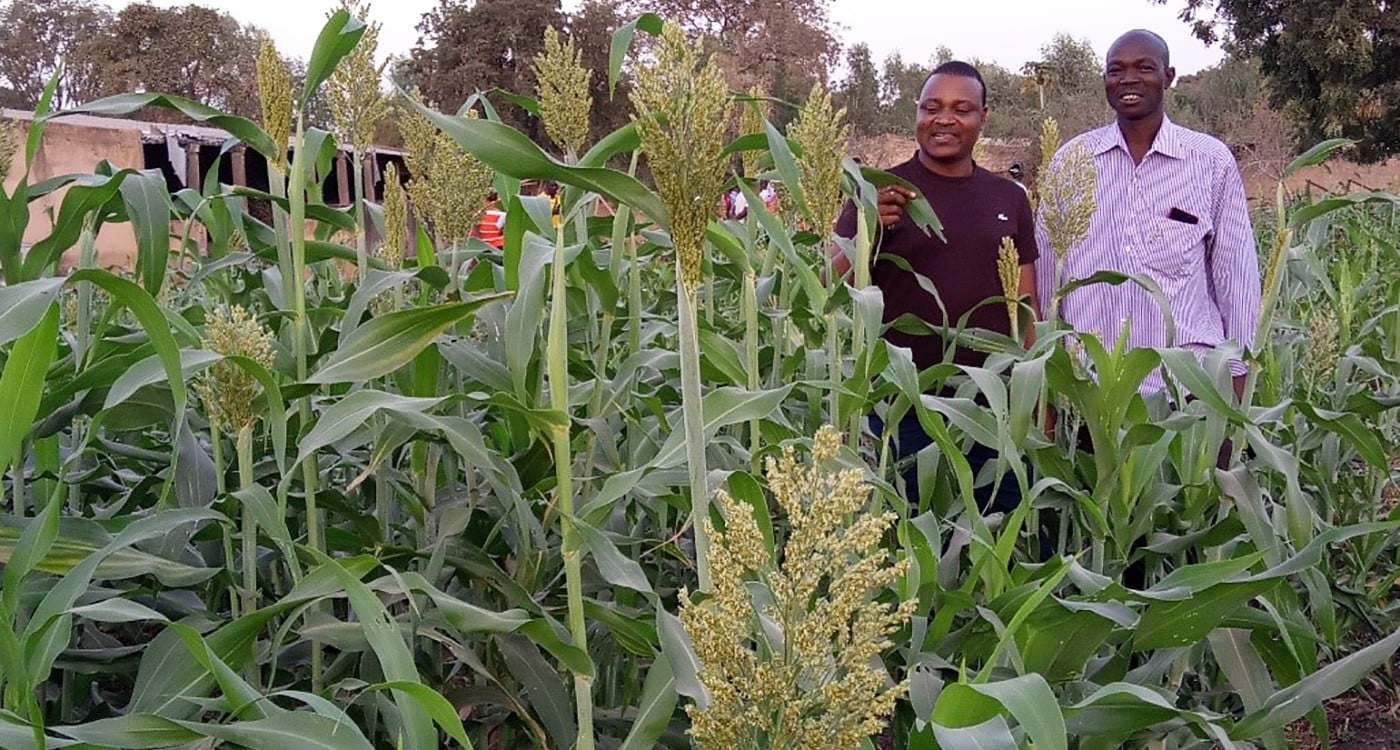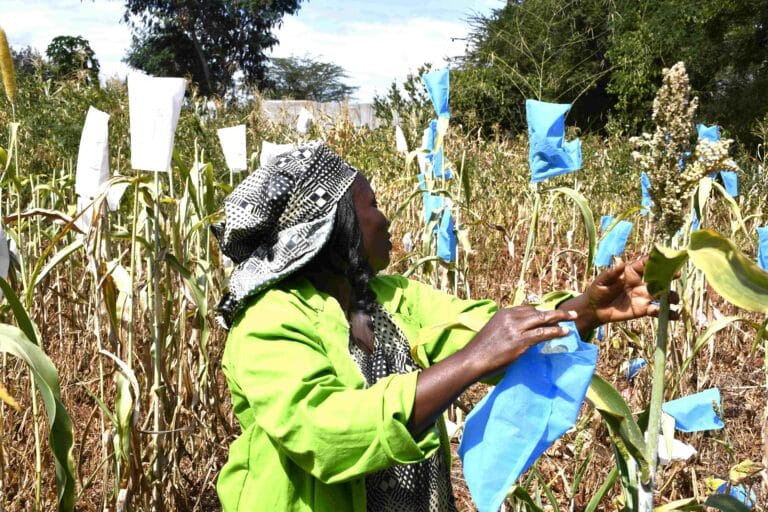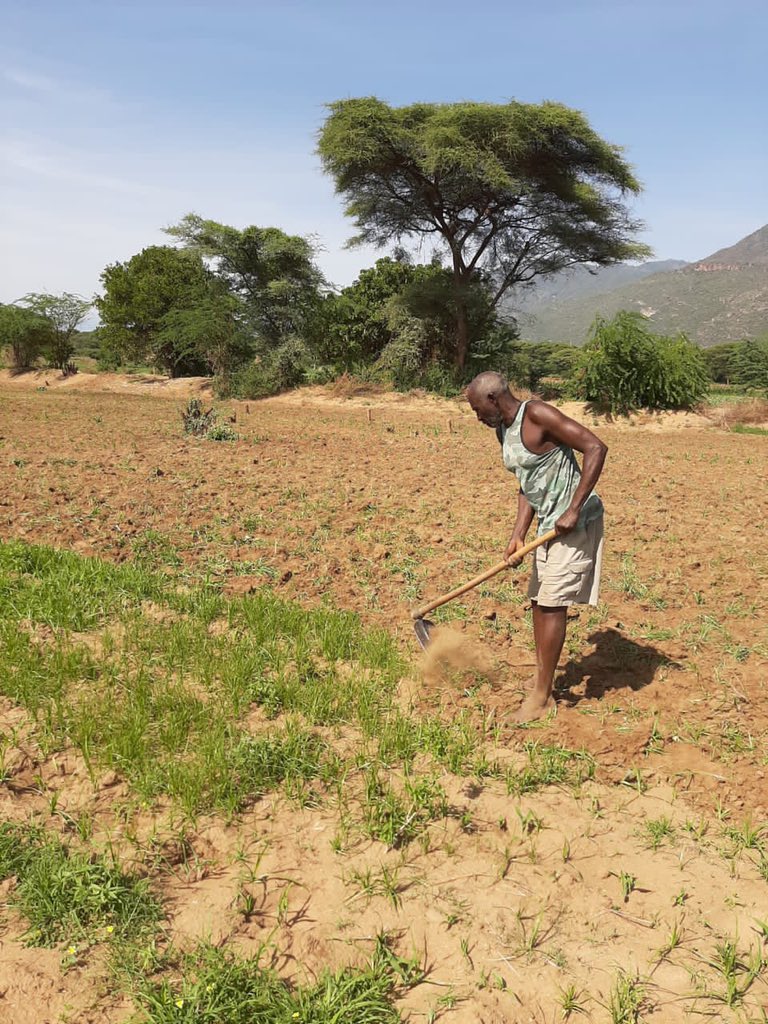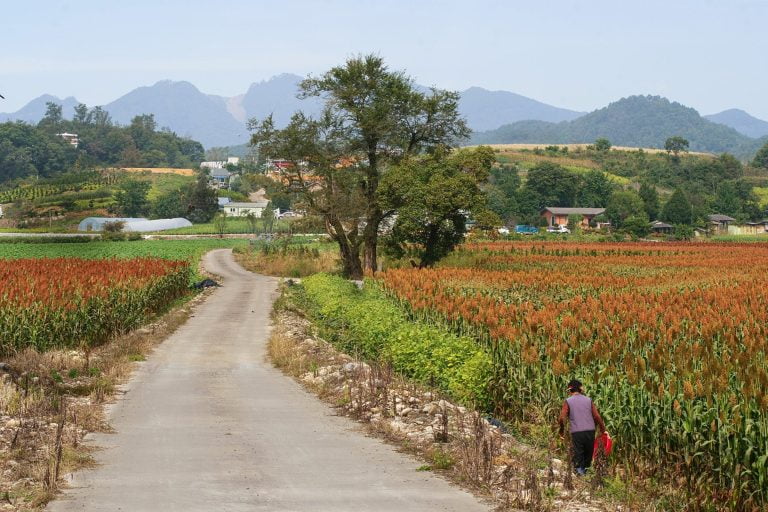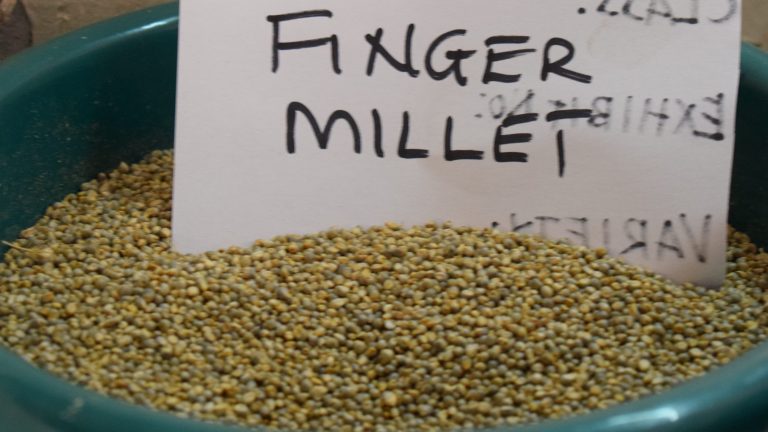A new variety of sorghum that delivers high yields of grain and stover is gaining popularity in Burkina Faso, a region where livestock feed remains a challenge. The International Crops Research Institute for the Semi-Arid Tropics (ICRISAT)-developed variety, Soubatimi, can be grown in the rainy and post-rainy seasons, benefiting farmers and livestock owners alike.
Mr Leon Badiara, from the Ministry of Animal and Fisheries Resources, and founder of Genetic Center, Burkina Faso, first heard about Soubatimi at the SAGE (Société Africaine de Génétique) launching conference in Ouagadougou, in November 2018. He visited the ICRISAT stall where Dr Baloua Nebie, sorghum breeder, was exhibiting a poster on multipurpose sweet sorghum varieties.
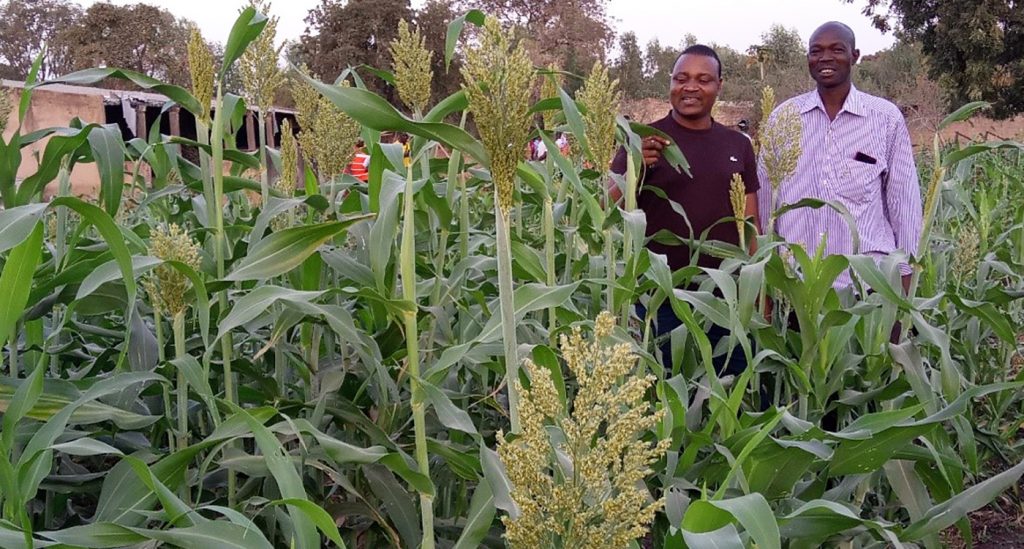
When he heard that Soubatimi combined high grain yield with high stover yield, and that it could be grown in rainy season as well as post-rainy season mainly for livestock feeding, Mr Badiara was immediately interested in testing Soubatimi in his field. The next year, he obtained the seed from ICRISAT and planted it at his Genetic Center in Ouagadougou. He harvested 1.8 tons of grains and 8 tons of dry stover from 0.4 ha. “After harvesting the grains and fodder, cut at 0.5 cm from the ground, I continued to irrigate the field once a week and that will be again harvested for animal feeding,” said Mr Badiara.
In order to popularize Soubatimi, the office of the National Direction of Animal Production organized a guided tour to the Genetic Center farm at Boulbi near Ouagadougou on 11 March 2020. Genetic Center, which specializes in dairy production, has a critical need of 30-50 tons of fodder yearly. This high-yielding variety, developed by ICRISAT and partners (Institute for Rural Economy (IER), CIRAD and Farmers organizations in Mali, with support from the McKnight foundation) was produced during the rainy season for the first time and the ratoons in dry season 2019/2020 showed good stover and grain yields.
The field visit got a lot of attention because sorghum production during off-season is uncommon in the region; most varieties grown in Burkina are photoperiod-sensitive and therefore produced during a specific period of time (June-October). Mr Badiara said, “We want more actors to take advantage of this new variety that will help better feeding of their livestock, as this variety produces stover of superior quality than what we usually cultivate.”
Participants of the field day also tasted dishes made from Soubatimi sorghum. “Generally the tô made from the grains of dual-purpose sorghum is not very appreciated for human consumption, but the dishes produced from this specific dual-purpose sorghum variety are very good,” said Mr Hamadou Bougoumpiga, fodder seed and dairy producer in Saaba.
Mr Issa Sawadogo, Director General of the Animal Production Service, said that the new variety should be popularized through more visits, field days and guided tours. Mr Badiara urged sorghum producers to adopt Soubatimi, saying, “There are very few and very poor pastures here to graze animals. If we want to produce milk or meat, it is in our interest to produce good quality fodder to feed our animals.”
Formally created since 2008, the Genetic Center is specialized in the production and sale of high-performing animals, artificial insemination, training of livestock value chain actors, advisory services in plant and dairy production.
In addition to high grain and stover yields (3.5 t/ha and >10 t/ha respectively), Soubatimi has sweet stem and the juice is used to produce sorghum syrup that can be used like honey in different diets. Due to its low photoperiod sensitivity, Soubatimi can be cultivated as an off-season crop, unlike most of other varieties of sorghum. Also, it is adapted in climatic zones receiving rainfall ranging from 600-1200 mm. The variety has good ratooning characteristics and at least two harvests can be obtained from only one sowing.


